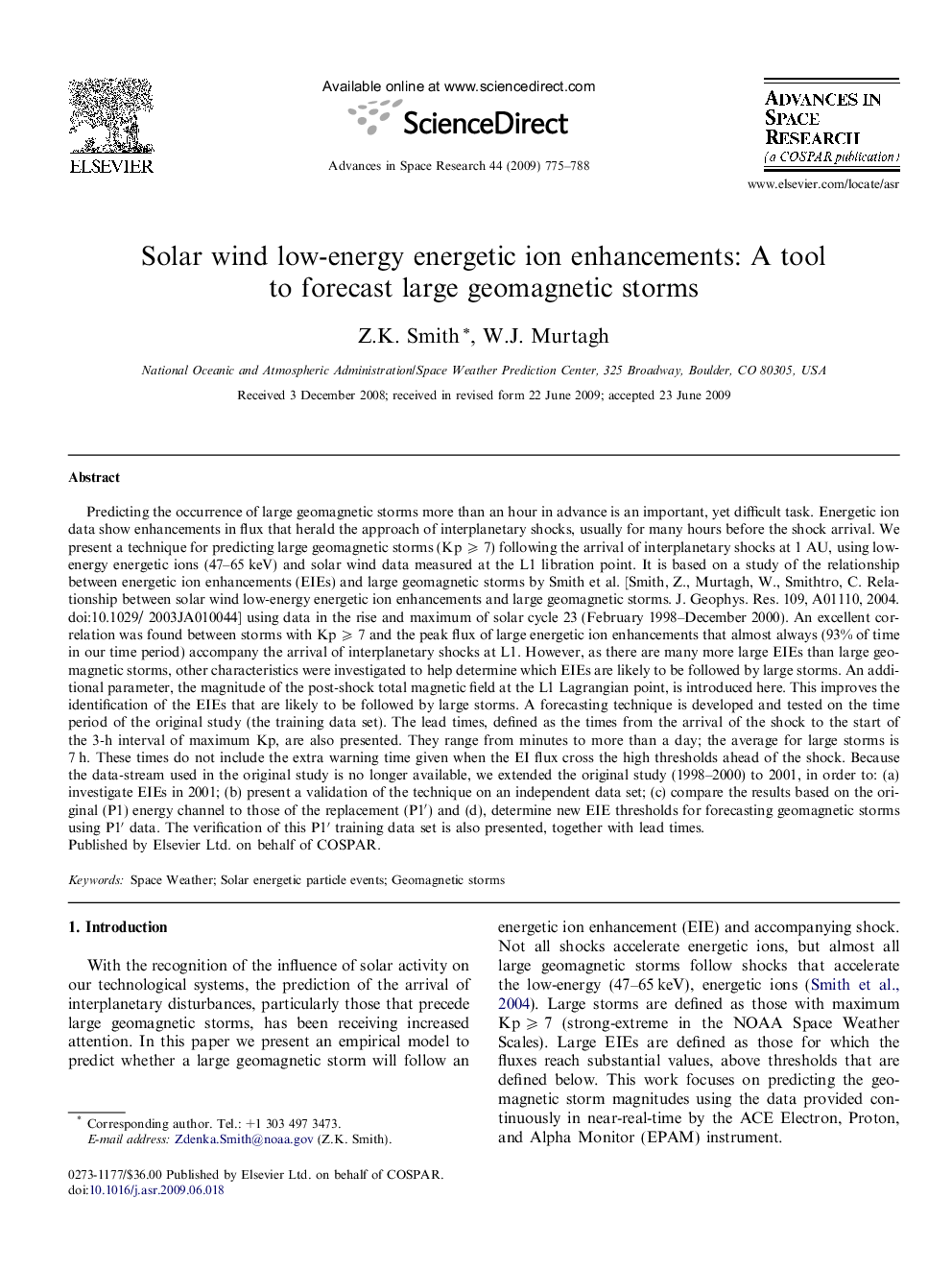| کد مقاله | کد نشریه | سال انتشار | مقاله انگلیسی | نسخه تمام متن |
|---|---|---|---|---|
| 1766109 | 1020135 | 2009 | 14 صفحه PDF | دانلود رایگان |
عنوان انگلیسی مقاله ISI
Solar wind low-energy energetic ion enhancements: A tool to forecast large geomagnetic storms
دانلود مقاله + سفارش ترجمه
دانلود مقاله ISI انگلیسی
رایگان برای ایرانیان
کلمات کلیدی
موضوعات مرتبط
مهندسی و علوم پایه
علوم زمین و سیارات
علوم فضا و نجوم
پیش نمایش صفحه اول مقاله

چکیده انگلیسی
Predicting the occurrence of large geomagnetic storms more than an hour in advance is an important, yet difficult task. Energetic ion data show enhancements in flux that herald the approach of interplanetary shocks, usually for many hours before the shock arrival. We present a technique for predicting large geomagnetic storms (Kp ⩾ 7) following the arrival of interplanetary shocks at 1 AU, using low-energy energetic ions (47-65 keV) and solar wind data measured at the L1 libration point. It is based on a study of the relationship between energetic ion enhancements (EIEs) and large geomagnetic storms by Smith et al. [Smith, Z., Murtagh, W., Smithtro, C. Relationship between solar wind low-energy energetic ion enhancements and large geomagnetic storms. J. Geophys. Res. 109, A01110, 2004. doi:10.1029/ 2003JA010044] using data in the rise and maximum of solar cycle 23 (February 1998-December 2000). An excellent correlation was found between storms with Kp ⩾ 7 and the peak flux of large energetic ion enhancements that almost always (93% of time in our time period) accompany the arrival of interplanetary shocks at L1. However, as there are many more large EIEs than large geomagnetic storms, other characteristics were investigated to help determine which EIEs are likely to be followed by large storms. An additional parameter, the magnitude of the post-shock total magnetic field at the L1 Lagrangian point, is introduced here. This improves the identification of the EIEs that are likely to be followed by large storms. A forecasting technique is developed and tested on the time period of the original study (the training data set). The lead times, defined as the times from the arrival of the shock to the start of the 3-h interval of maximum Kp, are also presented. They range from minutes to more than a day; the average for large storms is 7 h. These times do not include the extra warning time given when the EI flux cross the high thresholds ahead of the shock. Because the data-stream used in the original study is no longer available, we extended the original study (1998-2000) to 2001, in order to: (a) investigate EIEs in 2001; (b) present a validation of the technique on an independent data set; (c) compare the results based on the original (P1) energy channel to those of the replacement (P1â²) and (d), determine new EIE thresholds for forecasting geomagnetic storms using P1â² data. The verification of this P1â² training data set is also presented, together with lead times.
ناشر
Database: Elsevier - ScienceDirect (ساینس دایرکت)
Journal: Advances in Space Research - Volume 44, Issue 7, 1 October 2009, Pages 775-788
Journal: Advances in Space Research - Volume 44, Issue 7, 1 October 2009, Pages 775-788
نویسندگان
Z.K. Smith, W.J. Murtagh,